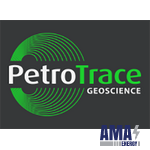Geological and Geomechanical Modeling
Structural modeling
Based on the results of a kinematic interpretation of seismic data and a detailed stratigraphic breakdown of well sections, an integrated three-dimensional structural model is created, including faults of various types, salt domes and intrusions, surfaces of reflecting and target (productive) horizons. A detailed integrated structural model serves as the basis for all further constructions, determining in many cases their reliability.
3D modeling
The spatial models of the lithological - facies rock types, their filtration - reservoir properties are built not only on the basis of well data, but also using the results of dynamic interpretation of seismic data and taking into account the developed geological (in the first sedimentation) concept. For this, detailed three-dimensional grids and flexible stochastic algorithms of lithological - facies and petrophysical modeling are used. The problem of modeling the initial saturation stands apart - here physical models (capillarity, Levrett J-function) are actively used, as well as the results of well testing and data from reservoir testers.
Fractured Reservoir Modeling
Combining the results of special processing and interpretation of 3D seismic data (Anisotropy analysis, Diffracted wave analysis) and high-tech well logging (Imagers, Cross dipole acoustic logging) allows you to create models of natural fracturing type DFN (Discrete Fracture Network) and obtain three-dimensional fields on their basis (permeability porosity fractures, matrix - crack ’) necessary for constructing filtration models taking into account the presence of natural fracturing.
Geomechanical modeling
The three-dimensional model of the stress-strain state of rocks is based on a detailed structural model (which in this case is built from the day surface to the target horizons), but also uses the results of dynamic interpretation of seismic data, rock physical models created according to GIS data, as well as laboratory research results core. Geomechanical models are tuned to drilling monitoring data and serve as an important tool for optimizing trajectories and well designs. These models help minimize the risks of drilling complications, thereby increasing the drilling speed and lowering the cost of constructing production and exploratory wells.

